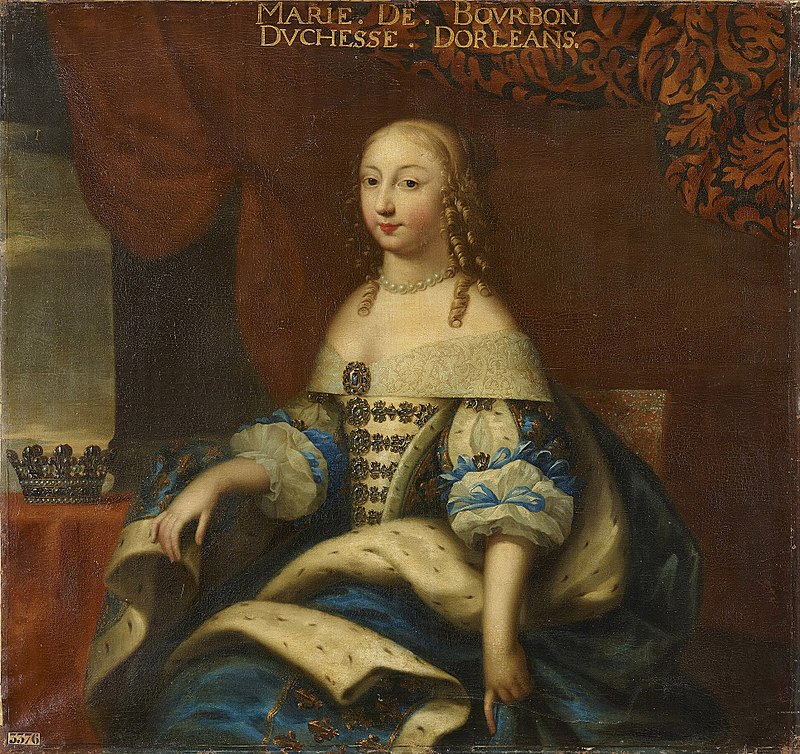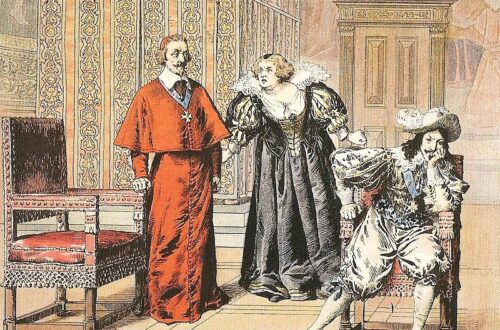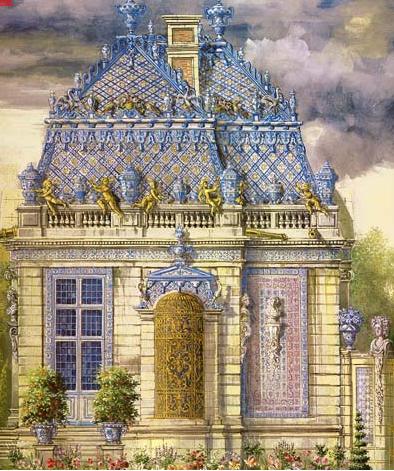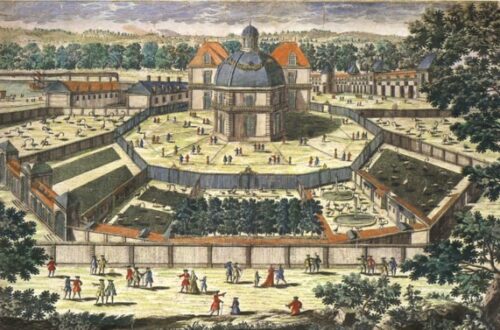Le potager du roi
One of the most important places of Versailles was the potager du roi -the King’s kitchen Garden- for it ensured the Sun King always had enough of his favourite vegetables and fruits on his plate. He did enjoy them quite a lot.

Louis XIV enjoyed to eat. A lot. He loved all sorts of fancy culinary delights, but he also loved his veggies and fruits. Especially young green vegetable, like peas and beans. Apart from the fish that ended up on his plate, pretty much everything else he ate came from Versailles or its surroundings. In order to always have his favourites fresh and ready, Louis asked his gardener Jean-Baptiste de La Quintinie to have a kitchen garden set up close to the chateau. This Monsieur de La Quintinie was a studied lawyer, who then acted as tutor and went on a trip to Italy with his pupil. He fell so in love with the Italian garden culture, that he decided to give his actual trade up in order to become a gardener. Nicolas Fouquet employed him as such to look after the gardens of Vaux-le-Vicomte, where he also worked with the famous Le Notre. After the disgrace of Fouquet, Monsieur de La Quintinie entered the service of Louis XIV.
The area that Louis XIV choose for his kitchen garden was far from suitable. It was march land, next to the pièce d’eau des Suisses and not far from the Orangerie, and nicknamed étang puant, which translates to smelly or stinky pond…. Monsieur de La Quintinie would have picked a different location for the garden, but the Sun King wanted it to be in close range… thus Monsieur de La Quintinie had quite the task ahead of him.
He started by having pretty much everything dug up and installing a drainage. Then everything was filled up again with proper soil, plus some manure from the royal stables, and workers under supervision of Jules Hardouin-Mansart installed the masonry work necessary to install terraces. For easy accessibility, a large wrought iron gate, called grille du roi, was installed and connected Versailles’ gardens to the Kitchen Garden. Louis XIV used this gate often to visit the garden.
The potager du roi, created between 1678 and 1683, still looks pretty much like it looked during the reign of Louis XIV. A circular pond with fountain builds the centre of the whole arrangement and is surrounded by a Grand Carré. It does not only look nice, but also provided the needed water, via a drainage system, for the twenty-nine enclosed plots of soil. All of it was surrounded by a raised terrace, which Louis XIV used to watch the thirty gardeners it took to keep the whole thing running. The layout of the garden was perfect to create different micro-climates and this allowed Monsieur de La Quintinie and his gardeners to grow fruit and vegetable out of season. Like he said himself: “heat, in the earth as well as in the air, can come regularly only from the rays of the sun. I dare say, however, that I was lucky enough to imitate it a little in regards to some small fruits: I succeeded in making some ripen five or six weeks early, for instance, strawberries at the end of March, early vegetables and peas in April, figs in June, asparagus and lettuces in December…”
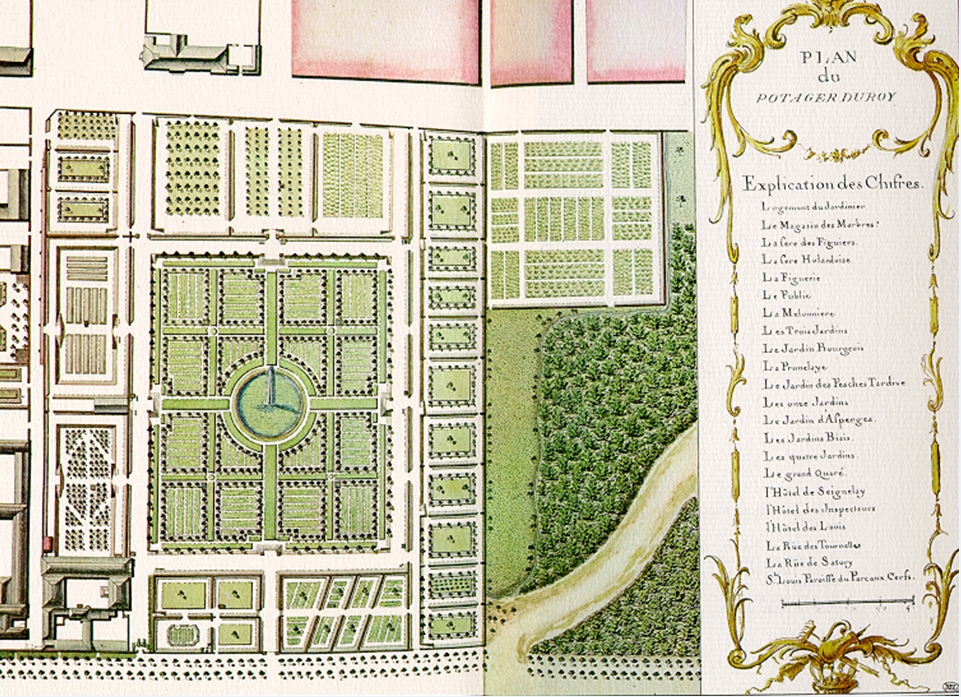
Louis XIV was very impressed by that. Also with La Quintinie’s figuerie. The Sun King loved to eat figs and Monsieur de La Quintinie came up with a way to ensure there were plenty when they were not in season. He had 700 potted fig trees in a hollowed out garden, which could be moved into the adjacent figuerie building in winter, and allowed him to provide Louis with figs in mid-June. Monsieur de La Quintinie also made sure to have special little gardens created for the King’s other faves, like melons, and set up three gardens dedicated to all things salad, like lettuce and herbs. In matters of lettuce, Louis XIV was provided with sixteen varieties. In case of pears, it were fifty varieties and twenty varieties of apples.
All of that did not just ensure Louis XIV had something on his plate, of course. It also was a show-off of craftsmanship and wealth. The King’s court was equally impressed by it as the King himself, Madame de Sévigné writes: “The craze for peas continues; the impatience waiting to eat them, to have eaten them, and the pleasure of eating them are the three subjects our princes have been discussing for the past four days now.”
Monsieur de La Quintinie looked after the Kitchen Garden until his death in 1688. “Madame, we have both suffered an irreparable loss.” was what Louis XIV wrote to he widowed Madame de La Quintinie. After La Quintinie’s death, Nicolas Besnard was briefly put into charge of the garden, before the position was given to François Le Normand in 1690. It was then run by Le Normand’s two sons and their descendants for the next ninety years. During their time, the first pineapples of France were grown in the Kitchen Garden and they also managed to grow coffee. The French Revolution made an end to it all. Everything was auctioned off and the Kitchen Garden became a school for horticulture and landscape architecture.
Today, the Kitchen Garden is open to the public and under the direction of Antoine Jacobsohn. It produces over fifty tons of fruits and thirty tons of vegetables each year.
